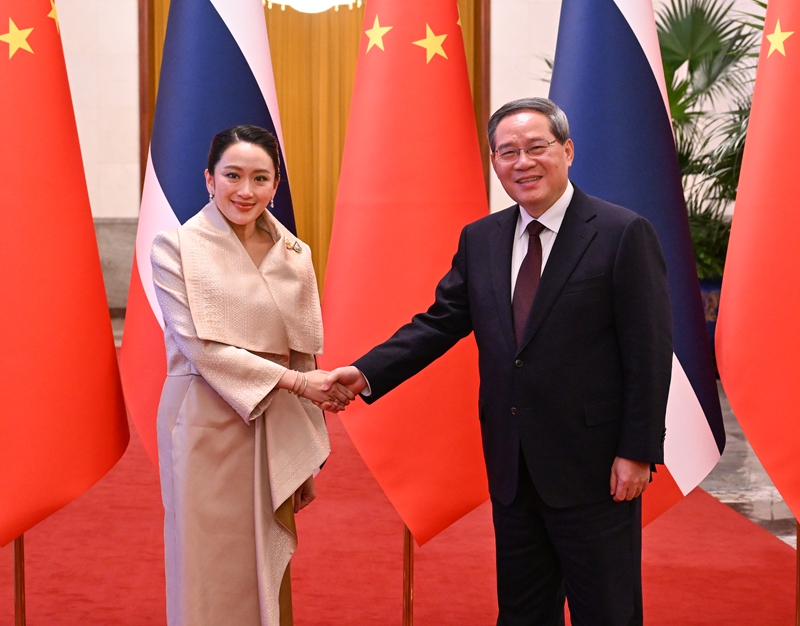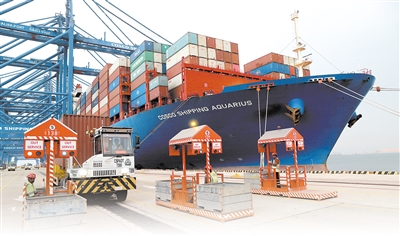Seize The Opportunity Of RMB Internationalization And Banks Optimize Cross-border Service Capabilities
Seize The Opportunity Of RMB Internationalization And Banks Optimize Cross-border Service Capabilities
China Economic Correspondent Ci Yupeng reported in Beijing. Recently, the China Banking Association released the "RMB Internationalization Report (2024-2025)" (hereinafter referred to as the "Report"), pointing out that the level of RMB internationalization has steadily improved in recent years.
China Economic Correspondent Ci Yupeng reports from Beijing
Recently, the China Banking Association released the "RMB Internationalization Report (2024-2025)" (hereinafter referred to as the "Report"), which pointed out that the level of RMB internationalization has steadily improved in recent years, providing broad space for the banking industry to carry out cross-border RMB business.
A reporter from China Business News learned from an interview that the continuous advancement of RMB internationalization has brought business opportunities to banks in cross-border RMB settlement, trade financing and other aspects. Banks should take advantage of the trend and seize the opportunities.
The world’s fourth largest payment currency
The "Report" shows that cross-border RMB business has maintained rapid growth, and the global payment function of RMB has been further enhanced. According to official data, in 2023 and 2024, the total amount of cross-border RMB receipts and payments nationwide will be 52.3 trillion yuan and 64.1 trillion yuan respectively, with year-on-year growth rates of more than 20%; RMB cross-border payment system (C IPS) will handle a cumulative cross-border payment amount of 175.5 trillion yuan in 2024, a year-on-year increase of 42.6%; in November 2023, RMB became the fourth largest payment currency in the world, and it will still remain fourth at the end of 2024. In addition, the scale of RMB foreign exchange transactions and payment clearing in offshore markets such as Hong Kong, London, and Singapore has shown rapid growth.
At the same time, the status of RMB in global trade financing has risen sharply. The "Report" shows that official disclosures show that as of the end of 2024, the RMB has become the world's third largest trade financing currency, second only to the U.S. dollar and the euro. In addition, the RMB has shown "both quantity and quality" in the securities market. The trading scale of Southbound Connect and Bond Connect reached a new high, and the CIBM and QFII mechanisms continued to be optimized. As of the end of 2024, among the RMB assets held by overseas institutions and individuals, stock and bond investments totaled 7.12 trillion yuan, a year-on-year increase of 9.4%.
Yang Haiping, a special researcher at the Beijing Wealth Management Industry Association, told reporters that the following aspects need to be further optimized in the process of RMB internationalization: First, focus on improving the openness of China's financial market in the long run, enhance the attractiveness of China's financial assets and financial markets, and unblock the channels for the return of RMB from overseas; second, further upgrade the interoperability mechanism , strengthen Hong Kong’s status as an offshore RMB center; third, focus on the “Belt and Road” initiative to improve the direct investment function of RMB; fourth, assess the situation, capture key time windows, and promote the link between RMB and key assets, key scenarios, key markets, and key applications; fifth, continue to improve the infrastructure for the cross-border use of RMB.
Banks expand cross-border financial services in multiple dimensions
The improvement of the internationalization level of RMB and the activeness of my country's foreign trade have provided broad space for the banking industry to carry out cross-border RMB business. With the in-depth implementation of the "Belt and Road" initiative, the gradual maturity of the offshore RMB market, the continuous expansion of the RMB global clearing service network, and the increasingly perfect construction of financial "overseas" channels, banks' strategies to promote the cross-border use of RMB have been further enriched and the dimensions have been continuously expanded.
A banker in North China said: "Currently, my country's commercial banks have relatively complete service systems and solutions in agency settlement, trade financing, financial markets, asset management, etc., which provide practical guarantee for the development of cross-border RMB business. However, in terms of product and service capabilities, some commercial banks still need to promote internationalization to meet the diverse needs of customers and ensure good results of products and services."
Yang Haiping told reporters that the continuous advancement of RMB internationalization has provided commercial banks with business opportunities in RMB cross-border payment, cross-border RMB settlement, and trade financing. At the same time, it will indirectly bring more business opportunities for commercial banks to serve enterprises overseas. In addition, the internationalization of the RMB has also put forward higher requirements for commercial banks’ cross-border service capabilities, risk prevention and control capabilities, and compliance management capabilities.
As an important participant in RMB internationalization, banks should follow the trend, seize opportunities, and further play a market-building and promoting role in the process of RMB internationalization. In this regard, the "Report" puts forward three suggestions:
The first is to further refine cross-border RMB facilitation policies. Appropriately coordinate cross-border policy management requirements for domestic and foreign currencies, clarify the format or content of payment instructions for enterprises to handle cross-border RMB settlement business under trade, increase the frequency of updating the "List of Quality Enterprises in Cross-border RMB Settlement", and support banks in classifying customers under cross-border RMB business under the premise of controllable risks.
The second is to optimize the management mechanism of key business areas of RMB internationalization. Appropriately relax the pilot scope and access conditions for domestic and foreign currency integrated capital pools, and further expand the asset types and regional scope of cross-border RMB two-way asset transfers.
The third is to continue to improve the construction of the offshore RMB market. Enrich RMB investment and risk hedging tools in the offshore market, expand the upper limit of cross-border interbank financing, formulate differentiated regulatory policies for overseas RMB loans, and promote the establishment of a direct exchange mechanism between RMB and more small currencies.





